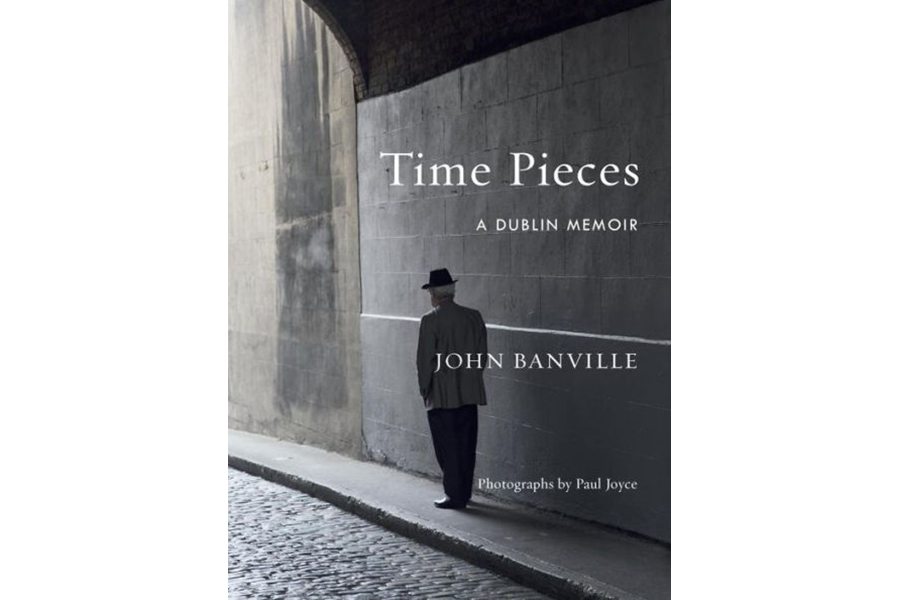'Time Pieces' is author John Banville's tribute to Dublin, the city that helped to shape him
Loading...
Irish author John Banville is best known for novels such as “The Sea,” which won the Booker Prize, along with "Ghosts," "The Blue Guitar," and last year’s "Mrs. Osmond."
In “Time Pieces,” Banville turns to memoir in an attempt to trace how Dublin shaped his personal and professional life.
Banville, 72, grew up outside of Dublin, in the small community of Wexford, in the 1950s. Having the city close enough to visit, yet distant enough to romanticize, seemed perfect for a boy learning to see the world one step removed, a good skill for any writer. The best part of “Time Pieces” is its opening chapter, when Banville recalls the Decembers of his boyhood that involved a train ride into the city to celebrate his birthday and go Christmas shopping.
“Away we would chug,” he writes, “the window beside me a black glass mirror in which I could study my menacingly shadowed reflection and imagine myself a confidential agent – as spies used to be called in the espionage novels of a previous age – on board the Orient Express and bound on a top-secret mission to the dusky and dangerous East.”
The passage is a kind of keynote for the rest of "Time Pieces," pointing readers to a continuing – and ultimately limiting – complication of Banville’s book.
Most evident from the start, of course, is Banville’s distinction as a prose stylist. His deft evocation of an earlier self reminds one favorably of Roger Rosenblatt’s “The Boy Detective,” in which Rosenblatt recreated the gumshoe fantasies of his Manhattan childhood.
It’s telling, though, that as he speeds toward Dublin, the young Banville daydreams of adventures elsewhere. The scene betrays a sensibility that informs his mature artistic vision as well. In his fictional works, Banville has favored literary imagination over literal landscape, focusing more on the inner terrain of the psyche than the outer geography of the physical world.
"I have never in my life paid much attention to my surroundings wherever it was I happened to find myself – artistic attention, that is," he tells readers. “For good or ill, as a writer I am and always have been concerned not with what people do – that, as (James) Joyce might say, with typical Joycean disdain, can be left to the journalists – but with what they are. Art is a constant effort to strike past the mere daily doings of humankind in order to arrive at, or at least to approach as closely as possible to, the essence of what it is, simply, to be.”
Banville’s professed ambivalence about his local turf is an obvious challenge for a memoir that’s ostensibly about place. If he doesn’t seem much interested in his native locale, why should we be? The shrug with which he addresses his subject is apparent at various points in the narrative. He mentions a lovely vista from Dublin’s Baggot Street Bridge, asks himself if the view he’s describing is a northwards one, then moves on, apparently not caring enough to pin down what seems like an easy matter of research. He expresses casual curiosity about the origins of a Dublin pejorative, “gurrier,” which describes a person of “what used to be called ‘the lower orders,’” although he’s not sufficiently curious to find the answer for his readers.
In Eudora Welty’s "One Writer’s Beginnings," she revealed how the oral traditions of her Jackson, Mississippi youth shaped her fiction. Vladimir Nabokov’s memoir, "Speak, Memory" suggests a connection between his forced exile from his idyllic and privileged origins in turn-of-the-20th century Russia and the sense of spiritual displacement at the heart of “Lolita.”
As chronicled in “Time Pieces,” the influence of Dublin on Banville’s literary art is less clear, in part because of his frequently dispassionate approach to the material. As rendered here, the city doesn’t consistently come into focus, though there are flashes of insight, as when Banville discusses his reaction to – and sometimes against – legendary literary Dubliners such as Joyce and William Butler Yeats.
Banville makes an instructive comparison between the grand statues in Paris and those in Dublin, which tend to be much smaller. The contrast hints at a civic sensibility among the Irish that’s more wryly self-effacing, attuned to seeing things more or less as they are, not as they hope them to be.
Even so, "Time Pieces" can be can invitation to wonder, a quality invoked by the accompanying photographs by Paul Joyce, who captures his landscape scenes as living characters in a centuries-old drama. It’s apparently enough to challenge Banville to try to see Dublin as he first did decades ago.
“The child ... exists in a state of constantly recurring astonishment ... but eventually his consciousness becomes blurred,” Banville laments. “A time comes when, as we sadly say, he has seen it all. But none of us has seen it all: everything is always new, and every time is the first time. We do not grow up; all we do is grow dull.”
Danny Heitman, a columnist for The Baton Rouge Advocate, is the author of “A Summer of Birds: John James Audubon at Oakley House.”








